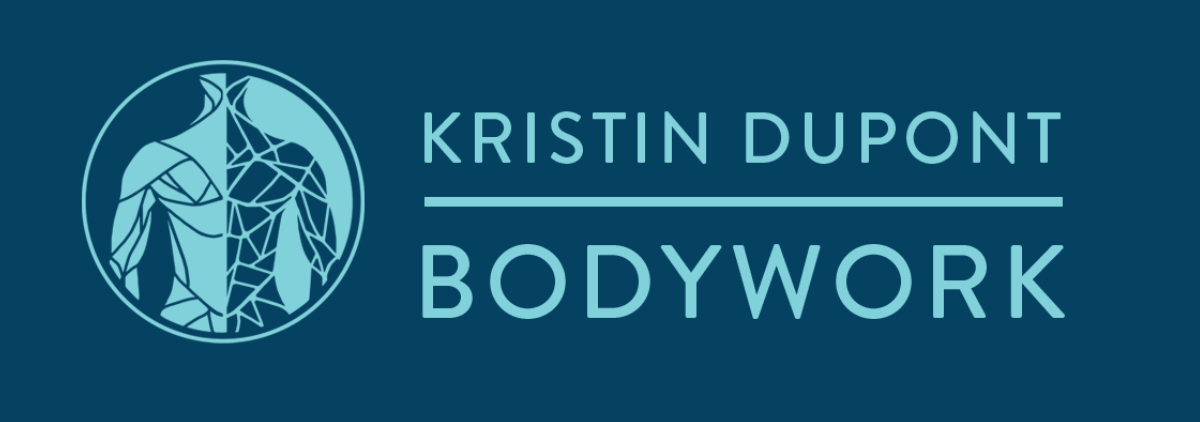
Method and Modalities
My approach to bodywork integrates several modalities of massage to deliver a balance of relaxation and pain relief. Tools and techniques used in each session will vary according to your individual needs, goals, medical history and how your body responds during and after your session. When the goal is to resolve pain in the body, it is important to monitor how the nervous system is responding to the inputs we are providing it. While some discomfort is expected when working through problematic areas, it is best to not work beyond a “good hurt” or a 7/10 on a pain scale.
Additionally, I view soft tissues as layers, from superficial to deep. When applying manual therapy to address these tissues, my approach works through the superficial layers to access the deeper layers. If the superficial layers are particularly tight or if you have been experiencing a significant amount of pain in an area, those deeper layers may not be accessible right away. If the tissues are “fighting me” or if the pressure is taking you beyond an appropriate pain range, the treatment is not optimal for long term relief. Therefore, more pressure does not mean more effective. Nor does “deeper pressure” equal “deeper tissue”. It is more effective to work WITH the body instead of AGAINST it.
Below are some brief descriptions of the modalities I may use in your session. Feel free to address any questions or concerns you have about these techniques during our intake at the beginning of your session or email me at kdupontbodywork@gmail.com any time.
-
These well known techniques use long, gliding strokes, kneading, and other movements to relax the body and improve circulation, They can be administered using light to firm pressure. These are the primary modalities I use in Prenatal massage and to aid in preparing soft tissues for deeper, more targeted work in Therapeutic sessions.
-
In my practice I sometimes integrate tools like cups and scrapers to assist in soft tissue mobilization and stimulate tissue repair.
I utilize silicone and plastic suction cups to create negative pressure (suction) on a particular area of the body to increase blood flow and release myofascial (connective tissue) restrictions. This technique is great for treating things like chronic shoulder and back pain, plantar fasciitis, carpal tunnel and and more. It can improve range of motion and fascial shearing (glide and slide between tissue layers) and aid in neuromuscular re-education.
-
NMT is targeted trigger point work designed to identify and resolve soft tissue problems at the source. Direct pressure is applied to an area and held until the trigger point is released. This technique is more detailed and precise and commonly requires application at muscle attachment sites. It is not unusual for clients to feel referral pain in other areas of the body while treating trigger points. This technique can help with common issues like migraines, lower back pain, sciatica, TMJ, various shoulder issues and much more.
-
Prenatal massage targets all of the common body aches associated with pregnancy, including low back pain, sciatica, swelling in the limbs, headaches, and tension in the neck and shoulders. You can receive prenatal massage at any stage of pregnancy. I am certified in Pre + Postnatal Massage and have included it in my practice for the entirety of my nearly two decade career. I am mindful of the unique considerations each stage of pregnancy brings and can provide you safe and effective relief throughout all trimesters. I use supportive pillows for proper side-positioning and have extra props on hand to make the experience as comfortable as possible.
Note for high risk pregnancy Please contact me via email at kdupontbodywork@gmail.com if your pregnancy is considered high risk or if you have a history of pregnancy or birth complications as a doctor's approval may be required before receiving a massage.
-
For Postnatal care, a massage can help soothe and nourish your body after birth and aid in emotional wellness as you settle into life with your new little one to care for.
Postnatal care is important for partners as well! Caring for an infant can take a toll on both parents (and grandparents). More bending over and lifting, awkward holding positions and sleep deprivation often lead to new aches and pains for all caretakers in your “village”. I love supporting your support system - partners, grandparents, nannies, etc.

